This post lists the top 101 black inventors and African Americans’ best invention ideas that changed the world. Despite racial prejudice and discrimination, African Americans have persevered and contributed significantly to science and various industries. Many African American inventors have made hundreds of innovative inventions, yet their achievements often go unnoticed in history. Here are some brilliant inventors who have made significant contributions to society (in no particular order):
Top 101 black inventors & African American’s best invention ideas
1. Thomas L. Jennings (1791 – 1856) – Dry scouring
Born free in 1791, Thomas Jennings is widely regarded as the first African American to hold a patent. He invented a dry scouring process, a precursor to modern dry-cleaning. Jennings established his own tailor and dry-cleaning business and gained a reputation as a respected local community member. Using the profits from his business, Jennings could purchase the freedom of his wife and children.
2. Judy Reed (1826 – 1905) – Dough kneader and roller
Judy Reed invented a dough kneader and roller that revolutionized the baking industry, making preparing dough more efficient. She was the first African American woman to receive a U.S. patent for her invention. Reed’s invention significantly impacted commercial baking, and her patent paved the way for more women and minorities to obtain patents and contribute to the field of innovation. By improving the efficiency of dough preparation, her invention made baking easier and enabled the production of more baked goods. Judy Reed’s legacy as an inventor and pioneer in the baking industry has inspired generations of inventors and entrepreneurs.
3. Benjamin Banneker (1731 – 1806) – Striking wall clock and almanacs
As a self-taught mathematician, Benjamin Banneker demonstrated a natural talent for inventing from a young age. In his early twenties, he became fascinated with a pocket watch and borrowed it to study its mechanism. A year later, he created an early version of a chiming wall clock that struck a gong on the hour instead of playing the Westminster chime melody. Banneker’s clock kept time for over 40 years. Born free in 1731, Banneker never experienced slavery. At 61, he completed the first edition of Banneker’s Almanac and gave it to Thomas Jefferson and then the United States Secretary of State. In the 18th century, almanacs were essential household items.
They provided information about the timing of sunrise, sunset, lunar and solar eclipses, moon phases, and holidays. Farmers in Delaware, Maryland, Pennsylvania, and Virginia relied on Banneker’s Almanac as a guide. When Banneker asked Jefferson to advocate for equal rights for African Americans and fight against racial prejudice, the Secretary of State acknowledged that Black people had talents equal to those of other races. Banneker passed away in 1806, 59 years before slavery was abolished.
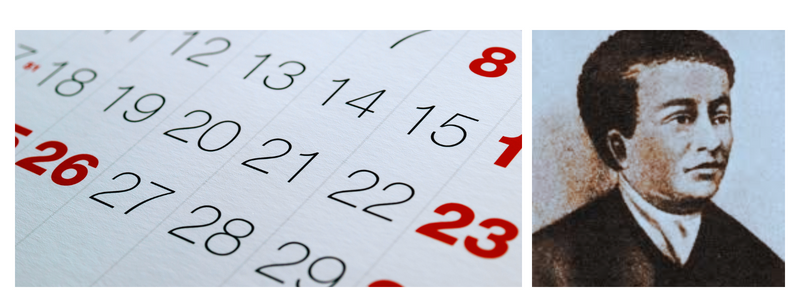
4. James Forten (1766 – 1842) – Ship sails handle
James Forten was born and raised in Philadelphia, Pennsylvania, in 1766. He served in the U.S. Navy during the Revolutionary War and was captured by the British. Despite being offered freedom if he agreed to live in England, Forten refused, choosing to remain a prisoner for liberty rather than betray his country. After the war, he became an apprentice sailmaker and developed equipment to help handle ship sails, significantly improving efficiency. His invention made him wealthy, and he used his wealth to support the abolition of slavery. Forten passed away in 1842.
5. George Peake (1722 – 1827) – Hand mill for grinding corn
George Peake, a soldier in the Revolutionary War, invented the conventional hand mill used for grinding corn. He was part of the first settlement in what would become modern-day Cleveland, Ohio, which was largely unsettled until the early 19th century.
Peake’s hand mill consisted of two round stones, each approximately 19 inches wide. At the time, the only tools available for grinding were the traditional mortar and pestle, making the hand mill a more efficient and convenient option. Although Peake did not file for a patent, he received credit for his invention thanks to a publication by the Cleveland Leader newspaper.
RELATED: Top 100 Famous Female Inventors in History & Modern Women Inventors
6. Andrew J. Beard (1849 – 1921) – Jenny coupler
Andrew Beard was born into slavery but became one of the country’s most brilliant inventors. Even before working for various rail companies, he invented a flour mill, several plows, and a rotary steam engine. However, while working for the railroads, he developed his most famous invention: the Jenny coupler.
The Jenny coupler automatically linked and locked two train cars as they bumped into each other, eliminating the need for workers to manually insert a metal pin and significantly reducing the risk of accidents and deaths. Before Beard’s invention, connecting train cars was dangerous work, and the Jenny coupler revolutionized transportation efficiency and safety.
7. Henry Blair (1807 – 1860) – Corn seed planter
Although Henry Blair is often credited as the first Black person to hold a U.S. patent, that honor belongs to Thomas Jennings, who was awarded a patent in 1821. While the U.S. Patent Office did not typically identify patent holders by race, Jennings’ achievement was remarkable, given the racial prejudice and discrimination of the time.
Little is known about Blair, except that he was likely not enslaved, as enslaved individuals were considered property and unable to hold patents. Blair’s inventions included a corn planter that combined plowing, seeding, and soil coverage, which he patented in 1834. He was later awarded a second patent for a cotton seed planter in 1836.
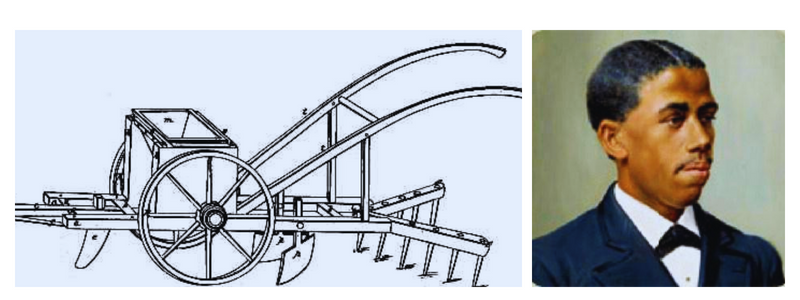
8. Hugh M. Browne (1851 – 1923) – Sewer Backflow Preventer
High Browne was committed to improving people’s living conditions as an educator with a practical mindset. He worked alongside prominent figures like Charles Chesnutt, W. E. B. DuBois, and Booker T. Washington to advance education. In addition to his work in education, Browne also invented a device, combining his knowledge of prototype design engineering, to trap sewer water and prevent it from flowing back into homes. He was awarded a patent for his prototype design engineering invention in 1890, and his device helped people maintain a civilized living environment.
9. George Washington Carver (1864 – 1943) – Crop rotation techniques
All three patents awarded to George Washington Carver were for cosmetics, paints, and stains. None of them were commercially successful. Carver’s discoveries were much more important than his inventions. He discovered that continuous cotton crops in the same piece of land depleted the soil’s natural nutrients. To avoid the damage, he experimented with crop rotation. Using peanut and sweet potato plants as the intermediates, he figured out that the system helped restore nitrogen in the soil, making the land healthy again.
Now that the market had more peanuts than anybody could ever need, Carver found other product uses. Among the products were metal polish, glue, shampoo, soap, and face powder. As mentioned above, none of the inventions made him a wealthy man.
10. Shelby Davidson (1868 – 1930) – Paper rewinding device
Just because someone works in a post office doesn’t mean the person has to deliver mail. Shelby Davidson worked for the United States Postal Service, specifically in the auditing department, where he kept track of schedules and numbers. Perhaps necessity is, after all, the mother of all inventions. Davidson invented a paper rewinding device for adding-machine in 1908 and an automatic fee device in 1911. Both inventions made his job much easier and more efficient.
RELATED: How to Succeed as an Inventor: What Does an Inventor Do?
11. Lewis Latimer (1848 – 1928) – Carbon filament for light bulb
Born in 1848 to formerly enslaved parents, Lewis Latimer was fortunate enough to land a job at a patent law firm after the Civil War, where he fought on the Union’s side. At the firm, he provided valuable invention design help as a draftsman whose drawings of machinery, mechanisms, and various inventions determined whether any patent application would be approved or denied. A skillful draftsman of his time, Latimer was employed by Alexander Graham Bell to draw the draft for the telephone design for which Bell received the patent in 1876.
While working as a draftsman and assistant manager for the U.S. Electric Lighting Company, he improved the process of making carbon filament for light bulbs so that it might last longer and be cheaper to produce. The filament was even more effective than Edison’s design, and in 1884, he was invited to work with Thomas Edison himself. He was the first person of color to be included in the exclusive Edison Pioneers organization. Latimer also invented a precursor to the modern air conditioner known as “an apparatus for cooling and disinfecting,” locking umbrellas, improved train bathroom design, a lamp fixture, and a device called “book supporter.”
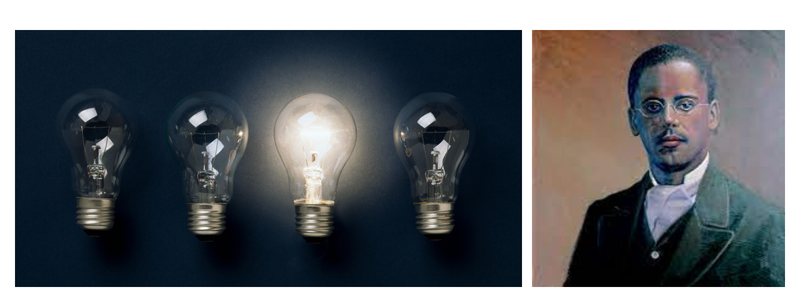
12. Jan Ernst Matzeliger (1852 – 1889) – Shoe lasting machine
Jan Ernst Matzeliger spent a considerable amount of time creating numerous prototype designs until he succeeded in building his first shoe-lasting machine. This machine was designed to make the leather uppers fit flawlessly with the mold, ultimately revolutionizing the shoemaking industry. With his invention, shoemaking efficiency drastically improved, increasing production output from 50 pairs a day by hand to anywhere between 150 and 700 pairs daily. Introducing easier manufacturing processes and larger production quantities led to a 50% reduction in shoe prices nationwide. Additionally, Matzeliger is credited with inventing the nailing machine.
13. George Washington Murray (1853 – 1926) – Furrow opener
George Washington Murray’s inventions were all born from his experience as a farmer and his determination to make labor less arduous. Having been born into slavery, Murray grew up on a Rembert cotton plantation until the Emancipation Proclamation was signed. His first three patents – a furrow opener, a marker, and a stalk-knocker-cultivator – were granted in April 1984. Two months later, the U.S. Patent Office awarded him four more patents, including for cotton chopper and fertilizer distributor devices. Murray was also distantly related to Jim Clyburn, a U.S. House of Representatives member from South Carolina.
14. John Parker (1827 – 1900) – Tobacco press
John Parker, a conductor in the Underground Railroad network and an American abolitionist, dedicated his life to freeing over a thousand enslaved individuals. In addition to his heroic efforts, Parker was also a successful businessman and inventor. He is credited with the early designs of the tobacco press and harrow, for which he received patents in 1884 and 1885. Moreover, Parker established the Phoenix Foundry in 1890, the largest between Cincinnati and Portsmouth. Parker’s contributions to society were not limited to his activism; he also became one of only fifty-five Americans to be awarded multiple U.S. patents by 1900.
15. Norbert Rillieux (1806 -1894) – Vacuum evaporator for sugar refinery
Norbert Rillieux’s father was the owner of a vast sugar plantation. After studying in Paris, Rillieux returned to the United States and began inventing sugar production devices, focusing on the evaporating process. His first patented invention was a vacuum evaporator for the refining process, which produced whiter and more refined sugar. Over time, this invention was widely used in other industries, including whiskey, gelatin, condensed milk, glue, and soap.
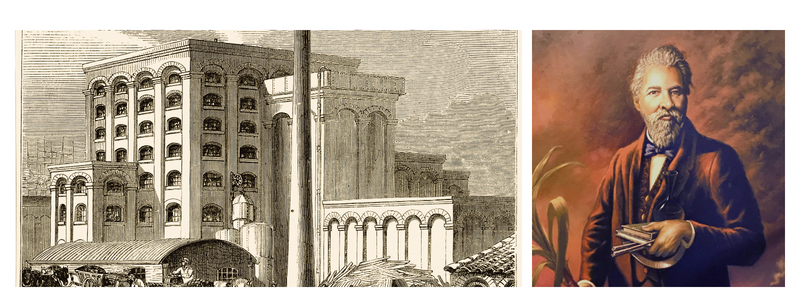
RELATED: 5 Fascinating Things Inventors Need to Know: Taking Products to the Market
16. Samuel Scottron (1843 – 1905) – Dual-adjustable mirror for barbershop
Samuel Scottron, the inventor of the dual-adjustable mirror on a pole commonly seen in traditional barbershops, named his invention the “Scottron Mirror.” This mirror is positioned so clients can observe their haircut from every angle. Scottron patented this practical invention in 1868. Following his success in the barbershop industry, Scottron created several commonplace household items, including curtain rods, adjustable window cornices, a pole tip, and a supporting bracket. He spent approximately 15 years traveling between the United States and Canada to sell these products. In addition to his successful career in inventing, Scottron was also a co-founder of the Cuban Anti-Slavery Society.
17. Lewis Temple (1800 – 1854) – Whaling harpoon
Lewis Temple, a highly skilled blacksmith, is credited with inventing an improved harpoon that revolutionized whaling in 1845. Unlike conventional harpoons, Temple’s harpoon resembled a fish hook in shape. Once the hook penetrated the whale, it would latch onto the flesh, making it exceedingly difficult for the animal to escape. This improved design, called Temple’s Iron, became the standard harpoon in the whaling industry throughout the 19th century. Despite his invention’s success, Lewis Temple was not a whaler himself.
18. Sarah Breedlove Walker (1867 – 1919) – Hot comb and pomade
Sarah Breedlove Walker, popularly known as Madame C. J. Walker, is arguably the most well-known African American woman inventor. She revolutionized haircare by designing the first hot comb and inventing the idea of pomade. Before the hot comb, most African American women straightened their hair with clothing irons, resulting in scalp and facial burns and damaged hair. Walker sold her inventions and helped transform the marketing strategy for cosmetic products.
She established a large group of saleswomen known as the “Walker Clubs,” a system later adopted by Mary Kay. In 1908, Walker founded Lelia College in Pittsburgh to teach women how to sell cosmetic products. Her innovative marketing tactics made her the first African American woman millionaire in the United States. Despite her wealth, Walker remained philanthropic and contributed significantly to various nonprofit groups, including the National Association for the Advancement of Colored Persons (NAACP). She even funded a scholarship to help women enroll in college-level education.
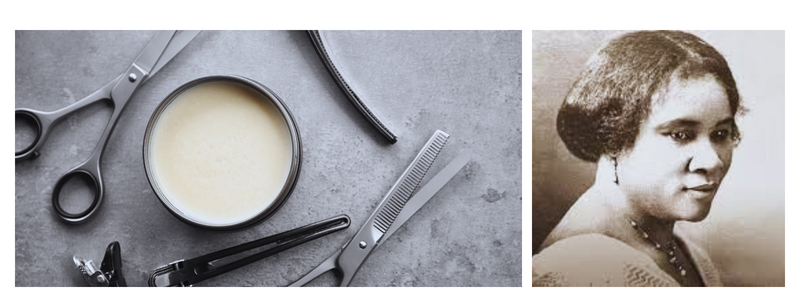
19. Granville T. Woods (1856 – 1910) – Telegraphony and synchronous multiplex railway telegraph
Granville T. Woods was awarded the patent for the steam boiler in 1884. Leveraging the communication technology of the late 1800s, he invented an apparatus that combined the functions of the telephone and the telegraph, called telegraphony. This groundbreaking system allowed telegraph stations to send both voice and text messages over the same line. Alexander Graham Bell’s company later purchased the technology’s patent.
Woods also invented the Synchronous Multiplex Railway Telegraph, a communication system that enabled railroad workers to determine the precise locations of trains on any given railway. This technology not only improved scheduling but also helped prevent railway accidents. Throughout his life, Woods received over 50 patents in various industries. Between 1900 and 1907, he was granted 20 patents for electronic devices that controlled trains. His numerous inventions earned him the nickname “The Black Edison.”
20. Elijah McCoy (1844 – 1929) – Lubricating cup for trains
Elijah McCoy never had to endure life in slavery thanks to the Underground Railroad, which helped his parents escape to Canada after being enslaved. At 15, McCoy enrolled in a boarding school in Edinburgh, Scotland, to study mechanical engineering. Despite his education, McCoy encountered difficulty finding respectable work in the United States, mainly due to racial discrimination.
He eventually secured a position as a fireman for a railroad company, where he was responsible for oiling the moving parts of the trains. The need for greater efficiency inspired McCoy to invent an automatic lubrication mechanism that reduced the need for labor and kept the train running smoothly. Some attribute the phrase “the real McCoy” to the success and efficiency of this mechanism, making it an expression of superior performance and quality.
RELATED: Inventor’s Guide to Patents
21. William Harry Barnes (1887 – 1945) – Hypophyscope
William Henry Barnes, an ENT doctor at the Frederick Douglas Hospital in Philadelphia, was not only a pioneer in the field of medical device design and development but also credited with inventing the hypophyscope. Incorporating his expertise in medical device design and development, this innovative medical instrument was specifically designed to reach the pituitary gland on the brain’s underside. This gland secretes hormones into the bloodstream, and Barnes’ invention made it easier for doctors to access it. Although reaching the gland without any specialized medical device was possible, Barnes’ instrument greatly facilitated the procedure. In addition to inventing the hypophyscope, Barnes improved upon a method to remove tonsils without bleeding, refining the process for greater efficiency.
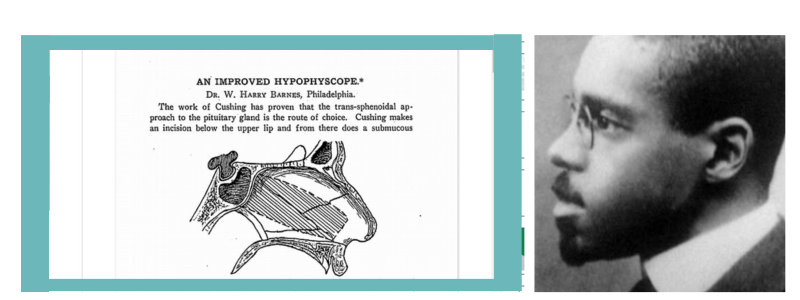
22. Leonidas Berry – Eder-Palmer biopsy gastrocope
In 1953, the Eder Instrument Company manufactured the Eder-Palmer biopsy gastroscope. Two years later, Leonidas Berry invented an attachment for the device that allowed doctors to collect tissue from a patient’s stomach without resorting to surgical procedures. The modified device, the Eder-Berry biopsy attachment, represented a significant advancement in medical technology.
In 1960, after conducting extensive studies of the stomachs of alcoholics, Dr. Berry made a groundbreaking discovery: excessive alcohol consumption caused more damage to the liver than to the stomach. This discovery revolutionized the treatment of alcoholism, shifting the focus to the liver as the primary organ affected by alcohol abuse. Berry’s discovery marked a significant milestone in the medical community’s understanding of the harmful effects of alcohol on the body.
23. Billy Blanks (1955 – present) – Tae Bo fitness program
Tae Bo is a total body fitness program that combines several disciplines, including martial arts and aerobics. The name is a portmanteau of “tae kwon do” and “boxing.” Developed in 1976 by tae kwon do practitioner Billy Banks, the program only gained widespread popularity in the United States during the 1990s. One hour of Tae Bo routine is believed to burn up to 800 calories, twice as many as a conventional aerobic session. This intensive calorie-burning program has made it a popular choice among fitness enthusiasts looking to achieve rapid weight loss and muscle toning.
24. Bessie Blount Griffin (1914 – 2009) – Portable receptacle support
After World War II, many soldiers returned home with permanent injuries. At the veteran’s hospital in Chicago, physical therapist Bessie Blount Griffin treated amputees and patients who had lost the use of their limbs. Determined to improve their quality of life, Griffin invented the “portable receptacle support,” a device that enabled patients to eat without assistance. The device consisted of a tube attached to a bowl and connected to a brace around the patient’s neck.
Though it may seem crude, the invention provided greater independence to those who needed it most. Griffin, born in Chesapeake, Virginia, was the first African American woman to work at Scotland Yard in London, England. Her innovative spirit and dedication to helping others continue to inspire new generations of inventors and medical professionals alike.
25. Otis Boykin (1920 -1982) – Electronic resistors for guided missiles
Otis Boykin was a brilliant inventor who made significant contributions across various fields. Throughout his life, he patented 26 devices, including the electronic resistors used in guided missiles, pacemakers, and IBM computers. Boykin’s electronic resistors were widely adopted due to their durability, which made them resistant to temperature changes, extreme acceleration, and shocks. In addition to these inventions, he held patents for an electronic air filter and a locking mechanism for cash registers. Boykin’s numerous innovations continue to shape and advance fields ranging from aerospace to healthcare and technology.
RELATED: Top 25 Resources for Everyday Inventors
26. George Carruthers (1939 – 2020) – Far ultraviolet camera and spectrograph
In 1969, George Carruthers invented the far ultraviolet camera and spectrograph that accompanied the Apollo 16 mission to the moon. The camera, plated in gold, could capture high-quality images of Earth from the moon’s surface. The device provided stunning photographs and helped scientists discover the presence of hydrogen in space and understand the mechanisms of air pollution. Carruthers’ invention has since led to new theories about the birth of stars and has influenced global efforts to control air pollution. The far ultraviolet camera and spectrograph remain remarkable in space exploration and scientific innovation.
27. Michael Croslin (1933 – 1989) – Blood and pulse monitoring device
Michael Croslin’s invention, the Medtek 410, revolutionized blood monitoring with its computerized technology. Before its development, medical professionals had to rely on their instincts and the patient’s vital signs for diagnosis. The Medtek 410 eliminated the guesswork, providing doctors with accurate and reliable data for making informed treatment decisions. Croslin also developed a similar device, the Medtek 420, which automatically adjusts for surrounding noise and air pressure while monitoring a patient’s pulse. Together, these inventions have improved the accuracy and efficacy of medical treatments, demonstrating the power of technological innovation in medicine.
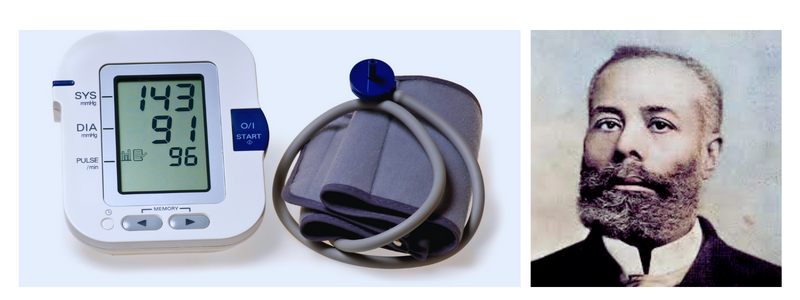
28. Meredith Charles Gourdine (1929 – 1998) – Electradyne spray gun and incineraid
Meredith Charles Gourdine was a pioneering inventor who applied the principles of electrogasdynamics (EGD) to create groundbreaking devices. Among his most notable innovations were the Electradyne Spray Gun, which simplified painting on challenging surfaces like metal frames, and the Incineraid, which reduced air pollution from incinerators.
Gourdine was the first to apply electrogasdynamics to practical inventions, and his contributions extend beyond these devices. He also invented an electric car battery, a method for repairing potholes using old car tires, a system for extracting oil from shale rock, and a way to remove fog from airport runways. Throughout his career, Gourdine earned 25 patents between 1969 and 1996. His innovative spirit and commitment to improving the world around him continue to inspire inventors and scientists today.
29. Walter Lincoln Hawkins (1911-1992) – Weather-resistant cable coating
Walter Lincoln Hawkins, born in 1911 in Washington D.C., was the grandson of a slave. He attended Rensselaer Polytechnic Institute after high school and was one of only two African American students. Hawkins earned his doctorate from McGill University in 1938, becoming the first black person to hold a technical staff position at Bell Laboratories.
While at Bell Labs, Hawkins developed his most famous invention: a weather-resistant polymer coating for telephone wires. This plastic sheath could withstand extreme temperature changes and last for decades, replacing the lead materials previously used to protect telephone cables. Hawkins’ invention revolutionized the telecommunications industry and significantly impacted everyday life.
In 1976, Hawkins retired from Bell Labs and was appointed research director by the Plastics Institute of America. His groundbreaking work as a scientist and inventor opened doors for future generations of black scientists and helped shape the world we live in today.
30. Elmer Samuel Imes – Spectrometers
George Carruthers invented the far ultraviolet light camera and spectrograph, which captured high-quality images of Earth from the moon. In contrast, Elmer Samuel Imes was an astrophysicist who improved spectrometers to measure the amount of infrared in the atmosphere. His invention was subsequently used in various applications, including chemical lasers and rocket engines. Imes’ work helped pave the way for significant advancements in atmospheric and environmental monitoring and space exploration.
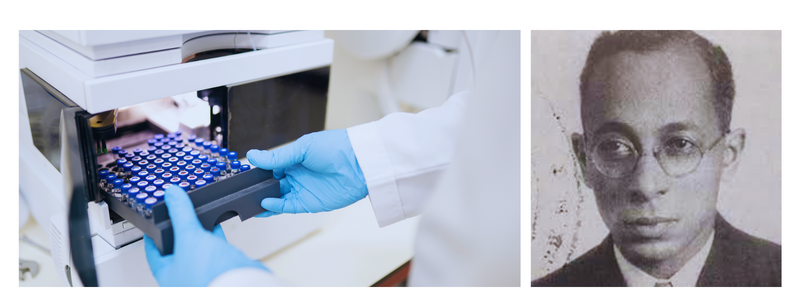
RELATED: From Idea to Reality: Turning Your Invention Into a Product
31. Lonnie Johnson (1949 – present) – Super soaker
Lonnie Johnson’s passion for scientific experimentation began during childhood when he would conduct experiments in his kitchen, building robots and making batches of rocket fuel. After working at NASA from 1979 to 1991, Johnson founded the Johnson Research and Development Co., Inc., creating three other development companies in Atlanta, Georgia.
While Johnson’s work at NASA focused on high-tech research programs such as a nuclear power source for the Galileo mission to Jupiter and a stealth bomber, his passion for inventing toys and everyday tools never faded. With around 80 patents to his name, Johnson has created a wide range of inventions, including compressed air guns, digital distance-measuring instruments, an automatic sprinkler controller, and even a wet diaper detector. However, his most famous invention remains the Super Soaker, a pressurized water gun that revolutionized the toy industry.
32. Frederick McKinley Jones (1893 – 1961) – Roof-mounted refrigeration for vehicle
Returning to Hallock, Minnesota, after World War I, Frederick McKinley Jones found work as a movie projectionist and a mechanic. Jones’ natural gift for machines and mechanics led him to invent the first sound synchronization device for motion pictures. His innovation made it possible for films to incorporate synchronized soundtracks, and it quickly revolutionized the movie industry. While sound synchronization was a great invention, Jones held no patent.
His first patent was for a ticket dispensing machine. Jones held more than 60 patents, but his most famous and significant invention was the refrigerated truck or, more specifically, the roof-mounted cooling system used on trucks. He was awarded the patent for it in 1940. During World War II, his invention played an important role in preserving food, supplies, and blood for the wounded. Jones’s other inventions include a control device for internal combustion engines, a temperature control system, and a rotary compressor.
33. Marjorie Stewart Joyner (1896 – 1994) – Permanent hair-waving machine
Marjorie Stewart Joyner was an African American businesswoman and community leader who significantly contributed to the beauty industry. She was the supervisor of more than 200 beauty schools under Madame C. J. Walker’s network, and her clients included prominent figures such as Ethel Waters, Marian Anderson, and Billie Holiday. Joyner held the patent for a permanent hair-waving machine, revolutionizing the hair care industry. The machine used a combination of chemicals and heat to curl hair, replacing the traditional curling iron and reducing the time and effort required to achieve long-lasting curls. Joyner was also an advocate for civil rights and an active member of the National Council of Negro Women.
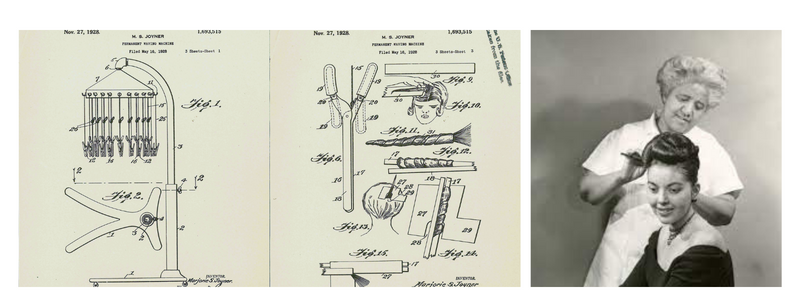
34. Percy Lavon Julian (1899 – 1975) – Aero-foam
Percy Lavon Julian was a renowned chemist who made many significant inventions. One of his creations was a soy protein coating paper that was a cheaper alternative to milk protein. This paper was used in a product called Aero-Foam, which was used to smother fires from burning gasoline and oil. During World War II, the U.S. Navy also used Aero-Foam. Although Aero-Foam had slow knockdown characteristics, it was safe to use as long as it was applied above the burning liquid.
Julian’s most famous inventions were synthetic hormones, including physostigmine and cortisone, also derived from soybean plants. Physostigmine is still used to treat glaucoma, while the cortisone is used for rheumatoid arthritis. In addition to his scientific achievements, Julian was a prominent civil rights activist and raised money for the NAACP’s legal and education divisions.
35. John King (1925 – 2000) – Sonic transducer
A sonic transducer uses sound waves to determine an object’s speed, distance, and other units of measurement. John King invented an early warning sonic transducer in 1972, which could detect potential problems with aircraft engines before takeoff. A professional in the aerospace and safety industries, he also invented an alarm system in 1999; it was not just any other alarm system for home uses but a NASA-approved one.
RELATED: How Cad Crowd Helps Inventors Design Innovative Products
36. Garrett Morgan (1877 – 1963) – Gas mask and traffic signal
Garret Morgan invented the first hair straightening cream, albeit by accident. However, his other two inventions, the traffic signal and gas mask, resulted from deliberate research and development. His gas mask, known as the Morgan helmet, was identified in the patent application as a breathing device and was adopted by firefighters to help them put out fires without inhaling poisonous air. Morgan was awarded the patent in 1912, and soldiers used the gas mask during World War I.
With the money earned from his inventions, Morgan could buy a car. While driving near an intersection in Cleveland, Ohio, he witnessed a terrible accident, which inspired him to invent a “yield” component as an addition to the existing traffic signal. The signal was intended to warn drivers about an upcoming stop. The yield component became one of the world’s first three-light systems, and Morgan was awarded the patent for it in 1924. Morgan’s other inventions include the round belt fastener, hat fastener, and friction drive clutch.
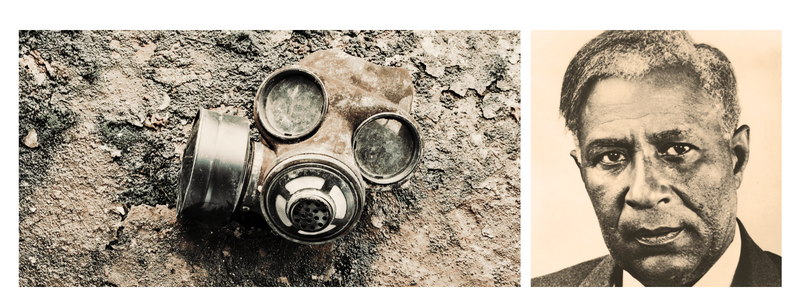
37. James Parsons Jr. (1900 -1989) – Iron alloy
James Parsons held several patents related to metal fabrication methods. In 1929, he was awarded a patent for an iron alloy, followed by a fabrication method for a silicon-iron compound in 1931. In 1934, he developed a treatment process for silicon alloy casting, and in 1940, he invented a corrosion-resistant ferrous alloy. These inventions paved the way for the development of stainless steel.
38. Edwin Roberts Russell (1913 – 1996) – Separation of plutonium from uranium
During World War II, Edwin Roberts Russell was one of the chemists working on the Manhattan Project at the Metallurgical Laboratory of the University of Chicago, a secret government-funded research to develop the atomic bomb. The project eventually led to the development of two types of atomic bombs, known to history as the Little Boy and Fat Man, used in the bombings of Hiroshima and Nagasaki in 1945.
Russel held eleven patents for nuclear energy, including a method for separating plutonium from uranium and ion exchange absorption for plutonium separation. His works contributed significantly to the advancement of nuclear technology.
39. Earl Shaw (1937 -present) – Laser beam power adjustment
Earl Shaw invented the spin-flip Raman tunable laser during his tenure as a research scientist at Bell Laboratories. This device is used to adjust the strength of a laser beam, which is particularly helpful when performing delicate precision-required operations.
40. Dox Thrash (1896 – 1965) – Carborundum
Working as a print maker during the Great Depression, Dox Thrash invented a new technique for etching copper in 1937. His discovery, known as the carborundum process, became a standard practice among printers and print makers. This process involves using silicon carbide grit, which is sprinkled onto the plate before it is printed, creating a texture and tone that mimics the look of charcoal or pencil drawings. Thrash wanted to name the process “Opheliagraph” after his mother, Ophelia.

RELATED: 7 Ways the Cloud Is Changing the Way Inventors Do Business
41. Moses Fleetwood (“Fleet”) Walker (1856 – 1924) – Artillery shell
Until Jackie Robinson joined the Brooklyn Dodgers in 1947, Moses Fleetwood Walker was among the first black people to play Major League Baseball in the 1880s. Walker was also an inventor. In 1891, he was granted his first patent for a detachable shirt collar. He also held three more patents related to methods for loading and changing movie reels.
42. Sarah Boone (1847 – 1904) – Improved ironing board
In the 19th century, Sarah Boone improved the ironing board, which had been around for years but often overlooked. Boone built a curved ironing board with a narrower width than the original, making ironing women’s clothing easier. Her design was patented in 1892 and became the most widely-copied iteration of the ironing board. It’s worth noting that Boone was born into slavery.
43. Mary Van Brittan Brown (1922 – 1999) – Home Camera Security System
An African American nurse named Mary Van Britta Brown spent many nights alone at her home in Queens, New York, in the 1960s. The crime rate was high in the neighborhood, making her feel unsafe each time her husband was away. In addition, the police were largely unresponsive and could sometimes be unreliable. In 1966, out of necessity, she built a homemade security system comprised of cameras connected to a monitor.
The camera could mechanically slide into several peepholes in the front door and broadcast the image to the screen. The design allowed her to survey the neighborhood from the indoor comfort of her home and avoid having unwanted guests around. Van Brittan Brown continued improving the system by adding a microphone to speak to the person at the door, a button to call the police, and an unlock mechanism. She and her husband were awarded the patent for the system in 1969. Modern home security systems feature various elements based on their design.

44. Alexander Miles – Automatic elevator doors
In the past, riding elevators was complicated and dangerous. Passengers had to manually shut both the elevator and shaft doors before riding. Forgetting to shut the doors properly, or ignoring them, posed a real risk of falling down the shaft. When Alexander Miles’ daughter was almost involved in a catastrophic accident, he decided to develop a system to make elevators safer. In 1887, he was granted a patent for an automatic opening and closing mechanism for elevator and shaft doors. Miles’ design is still used in modern elevators today.
45. James E. West (1931 – present) – Electret microphone
The vast majority of modern microphones, including those in phones and other communication devices, are based on the technology invented by James E. West in 1960. However, he was not the only person credited with the invention, and West was working alongside Gerhard Sessler at the Bell Laboratories, tasked with creating a compact and sensitive microphone.
Their invention, the foil electret microphone, was cheaper to produce than the conventional condenser variant. It was not until 1964 that they perfected the design and were awarded the patent. About four years later, the technology had already been adopted by manufacturers of telephones, tape recorders, hearing aids, and baby monitors.
RELATED: 101 Inventions That Changed the World in the Last 100 Years
46. Mark Dean (1956 – present) – Color monitor, Gigahertz chip, IBM PC
Among the 12 people working at IBM to develop the first PC, Mark Dean was one of them. Back then, the P.C. was connected to a monochrome monitor, and the computer had very limited processing power. Dean began working for IBM in the 1980s as Chief Engineer. In addition to helping develop the IBM PC, he was also involved in creating the first color monitor. Furthermore, he led the team that created the first gigahertz chip around 1999-2000.
It’s hard to believe that it was only about 20 years ago. Now we have supercomputers and artificial intelligence with blazing processing speeds to handle even the most complicated algorithms in split seconds. As a co-creator of the personal computer, Mark Dean holds three out of nine patents for the invention. In 1995, he became the first African American IBM Fellow.
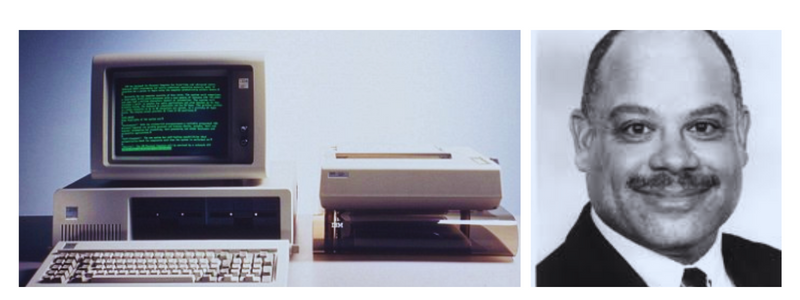
47. Patricia Bath (1942 – 2019) – Cataract Laserphaco probe
Patricia Bath was an academic and ophthalmologist who invented the process of removing cataracts using a laser beam device known as the Laserphaco Probe. She was born in Harlem in 1942 to an immigrant father from Trinidad and a mother who was a descendant of enslaved Africans and Cherokee Native Americans.
Bath achieved many impressive milestones in her career. She was the first woman appointed to the ophthalmology faculty at UCLA and the first African American woman to serve as a surgeon staff at the UCLA Medical Center. Additionally, she was the first African American to be a Jules Stein Eye Institute member, lead a post-graduate ophthalmology training program, and complete a residency in ophthalmology at New York University. Finally, she was the first African American woman to hold a patent for a medical invention.
48. Benjamin Boardley (1830 – 1904) – Steam engine for ships
Benjamin Boardley was born into slavery around 1830 and taught himself to read and write with the help of his master’s children. He showed an early talent for invention, which led his master to recommend him to the United States Naval Academy in Maryland. Boardley’s first job at the academy was as an assistant in the Department of Natural and Experimental Philosophy, making him the first African American to hold a non-menial position there.
While working in the department, Boardley developed the first steam engine on a ship. Unfortunately, due to his status as an enslaved person, he could not legally apply for or be granted a patent for his invention. As a result, Boardley sold the rights to his invention and used the proceeds to purchase his freedom from slavery.
49. Henry Brown (1800s) – Safe deposit box
The safe deposit box, initially designed as a receptacle for storing and preserving papers, was invented by Henry Brown, who was awarded the patent in 1886. The metal receptacle came equipped with a locking mechanism, making it a simple and effective design that revolutionized safekeeping for centuries.
50. Alfred L. Cralle (1866 – 1920) – Ice cream scoop
Ladles and spoons were never meant to be the right tools for serving ice cream. Alfred L. Cralle, who had only received basic education as a child, noticed this while working at a hotel in Pittsburgh. He went on to develop a purpose-built tool for the job known today as the ice cream scoop. His invention spread so quickly that nobody knew the creative mind behind the design. Unfortunately, Cralle never profited from his idea.
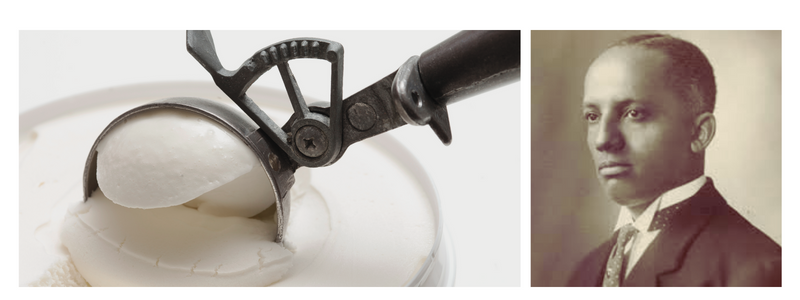
RELATED: Figuring Out the Financials: Will Your Invention Be Profitable?
51. Mary Jones DeLeon (1838 – 1914) – Steam table
Mary Jones DeLeon was among the first black women to be awarded U.S. patents for their inventions, receiving her patent in 1896. Her invention was referred to simply as a “cooking apparatus” in the patent. Still, it was an innovative device that would become the precursor to the modern steam table commonly seen in food buffets today. Before DeLeon’s invention, hot food was often kept warm using chafing dishes, which required frequent refueling and could be dangerous.
DeLeon’s invention utilized steam to keep food at a consistent temperature without an open flame. Her invention featured several compartments, each with its own heating element, allowing different dishes to be kept at different temperatures. This invention was an important step forward in food service technology, making it easier and safer to keep food warm and ready to serve. While her name may not be as well-known as other inventors of her time, her contributions to the food service industry have undoubtedly had a lasting impact.
52. Ellen Eglin (1836 – 1916) – Improved clothes ringer
Ellen Eglin, born in 1849, was an African American woman who made significant contributions to the field of laundry and cleaning. While working as a housekeeper, Eglin developed an early mechanical clothes wringer that made it easier for people to wring out clothes after washing them, saving time and effort. Despite the practicality of her invention, Eglin faced significant barriers due to her race and gender. She was concerned that her invention would not be taken seriously because of her skin color.
As a result, she sold the patent to a white man named O. Wheeler for a small amount of money, which made him the official patent holder for the device in 1888. Unfortunately, Eglin did not receive the recognition she deserved for her invention during her lifetime. She died in 1890, never knowing the true impact of her contribution to the field of laundry and cleaning. It was not until years later that her name was finally recognized, and she was acknowledged as a pioneer in the field of laundry technology.
53. Sarah E. Goode (1855 – 1905)– Folding cabinet bed
Sarah E. Goode was born into slavery in 1855 as the second of seven children. After the Civil War ended, she and her family were finally freed. Goode later moved to Chicago, where she met and married a carpenter and stair builder. Together, they opened a furniture store, where Goode noticed that many of their clients lived in small apartments with limited space for furniture.
To address this problem, Goode designed a folding cabinet bed that could be used at night and as a roll-top desk during the day. This innovative design was a precursor to the modern-day wall bed and was particularly useful for small apartments. The bed could be easily folded and stored away, allowing the space to be used for other activities during the day.
Goode’s folding cabinet bed was a huge success and helped establish her reputation as an innovative and talented furniture designer. Despite facing discrimination as a black woman in a male-dominated industry, Goode continued to innovate and create new designs, including an improved version of the folding cabinet bed. Her legacy as a pioneering furniture designer and inventor continues to this day.
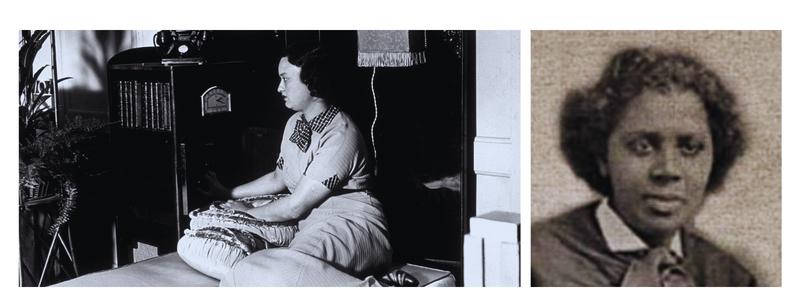
54. George Franklin Grant (1846 – 1910) – Golf tee
George Franklin Grant, Harvard’s first African American faculty member, was born to formerly enslaved people in 1846. He began his career as an errand boy for local dentist Dr. Albert Smith, but thanks to his hard work and performance, Dr. Smith promoted Grant to laboratory assistant. Grant pursued a career in dentistry and enrolled in Harvard Dental School, where he was one of only two black students at the time.
While he did not invent any dental care devices or products, Grant’s invention significantly impacted the sport of golf. He was an avid golfer and developed an early version of the golf tee using wood and latex resin. Before this invention, golfers would build a small mound of sand to place the ball before hitting it. Grant’s invention revolutionized the game, allowing for more consistent and stable ball placement, and his design is still used in modern golf today.
55. Lloyd Hall (1894 – 1971) – Vitamin concentrate, antioxidant salt, and asphalt emulsion
Lloyd Hall, an African American chemist, was born in Illinois in June 1894. His grandmother was a formerly enslaved person who came to the city with the assistance of the Underground Railroad. Hall earned a Bachelor of Science in Pharmaceutical Chemistry in 1916 and worked at Griffith’s Laboratories.
Hall was a brilliant inventor, holding 59 U.S. patents and several others in different countries. His most significant inventions include a vitamin concentrate, an antioxidant salt, nitrogen-fortified whey concentrate, a method for preserving frozen pork, a gelatin-based coating for food products, and an asphalt emulsion. His contributions to food preservation and safety have significantly impacted the industry, making food safer and more accessible worldwide.
RELATED: Best Tips for Creating a New Invention or New Product Design
56. Betty Wright Harris (1940 – present) – TATB spot test
Betty Harris was born in July 1940 in Louisiana and raised in a large family of twelve children. She earned her Bachelor’s Degree in Chemistry, then a Master’s, and finally a Ph.D. in 1973 from the University of New Mexico in Albuquerque. Throughout her career, Harris became a leading expert in hazardous water treatment, explosives, and environmental remediation.
Harris’s most notable invention was the TATB Spot Test, a method for identifying explosives. She was awarded the patent for this invention in 1984. Her test allowed for rapidly detecting explosives in the field, greatly improving safety in various industries. Harris was also recognized for her work in environmental protection, receiving multiple awards for her contributions to the area.
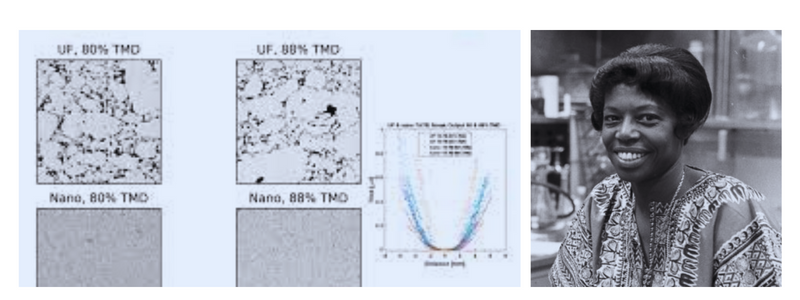
57. Benjamin Montgomery (1819 – 1877) – Shallow water steam propeller
Benjamin Montgomery’s story is similar to that of Benjamin Boardley, as both were born into slavery and taught to read and write by their owners’ children. Later on, they became inventors in the field of ship propulsion systems. While Boardley invented a steam engine for ships, Montgomery developed an adjustable propeller that could be operated at different angles, allowing boats to navigate shallow waters.
Montgomery was a skilled laborer who his master entrusted with the shipping operation of the plantation. He also had the opportunity to learn about drafting and land surveying. Despite being unable to file a patent for his propeller design due to his “slave” status, Montgomery was determined to commercialize it. His master, Joseph Davis, attempted to file the patent but was denied as he was not the inventor. Davis, however, allowed his slaves to keep the money they earned commercially from the operations.
Montgomery eventually accumulated enough wealth to purchase his master’s plantation as part of a long-term loan deal. He became the first African American to own and operate a plantation in Mississippi, where he implemented progressive agricultural practices, including crop rotation and diversification. Montgomery’s innovative spirit and entrepreneurialism inspired many, and he left a lasting legacy in the fields of agriculture and invention.
58. Lyda Newman (1885 – unknown) – Synthetic hairbrush
Lyda Newman, a hairdresser from Manhattan, New York City, revolutionized the hairbrush industry in the late 1800s. Hairbrushes of that time were made from animal hair, which was too soft to manage the typically thick African American hair. Newman proposed using synthetic fibers to replace animal hair. Her design closely resembled the modern-day hairbrush, with evenly spaced rows of bristles and open slots for cleaning. Additionally, she included a compartment at the back for easy removal of collected debris. In 1898, Newman was awarded a patent for her innovative invention. Despite her groundbreaking contribution to the beauty industry, very little is known about Lyda Newman beyond her invention.
59. Valerie Thomas (1943 – present) – Illusion transmitter
Valerie Thomas was an African American scientist and inventor who worked for NASA. She is known for inventing the illusion transmitter, which uses two concave mirrors to create three-dimensional images that appear outside the mirrors. Thomas was granted the patent for her invention in 1980, which has been used for various applications (i.e., surgery and television).
Thomas joined NASA in 1964 and worked there for over 30 years. She was involved in developing the Landsat program, which uses satellite imagery to study the Earth’s surface. She was also part of the team that developed the first satellite to provide images of the polar ice caps. Thomas was a trailblazer for women and minorities in science and engineering, and her contributions have impacted the field. She retired from NASA in 1995, but her legacy inspires future scientists and inventors.
60. Joseph R. Winters (1824 – 1916) – Fire escape ladder
Joseph Winter was a prominent African American abolitionist who lived in New Bedford, Massachusetts, during the mid-1800s. Alongside his activism, he was also an inventor and developed a fire escape ladder mounted on a vehicle. This invention resulted from observing a firefighter struggling to unload a traditional ladder from a wagon during a fire emergency. Winter’s fire escape ladder invention was more efficient and safer, as it could be deployed quickly and did not require the firefighter to carry it to the building.
In addition to his work as an inventor, Joseph Winter was an active member of the Underground Railroad, a network of secret routes and safe houses used by enslaved African Americans to escape to freedom in the North. He assisted many enslaved people in their escape, providing them with food, shelter, and directions on their journey. Winter’s fire escape ladder invention and his contributions to the Underground Railroad helped save countless lives and made him a significant figure in African American history.
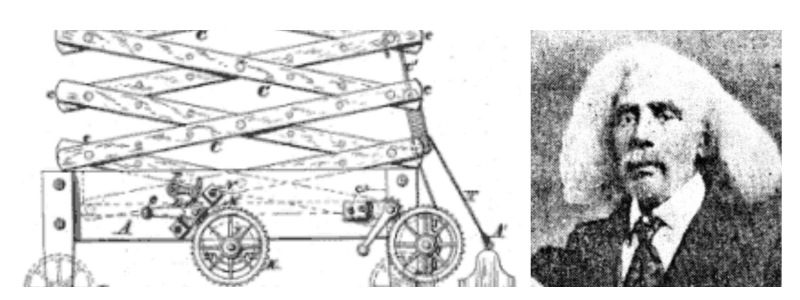
RELATED: How to Figure Out How Much Your Product Design is Worth
61. George Crum (1824 – 1914) – Potato chips
In the summer of 1883, George Crum, a chef, encountered a customer at his restaurant who complained about his plate of French fries, saying they were neither crunchy nor thin enough. In response, Crum sliced a potato into extremely thin pieces, fried them until they were crispy, and then heavily salted them to make them palatable. The customer was delighted with the new dish, and the potato chip was born.
The popularity of the snack was so overwhelming that Crum opened his restaurant and began serving a basket of potato chips on every table. The invention of potato chips created countless jobs worldwide and remains a favorite snack today. While Crum did not patent the invention, the snack has become a multi-billion dollar industry, with most potato chips now mass-produced and sold in bags.
62. George Alcorn (1940 – present) – X-ray spectrometer
George Alcorn is an impressive inventor who had an equally remarkable academic career. He earned his Bachelor’s Degree in physics from Occidental College, then earned a Master’s Degree in Nuclear Physics from Howard University, and a Ph.D. in Molecular Physics from Howard University. Alcorn worked for various prestigious companies and agencies throughout his career, including IBM, NASA, and Perkin-Elmer.
Throughout his career, Alcorn was granted eight patents, but undoubtedly, the most popular and groundbreaking of these was the X-ray Spectrometer. His invention is used for determining the materials of an object that cannot be broken down for closer analysis. The X-ray Spectrometer earned Alcorn the patent in 1984, earning him the NASA Inventor of the Year Award.
Alcorn’s work has had a significant impact on science and technology, particularly in the fields of space exploration and materials science. His contributions have not gone unnoticed. He has been recognized with many awards, including the NASA Langley Research Center Scientist/Engineer of the Year award and the Black Engineer of the Year President’s Award.
63. Charles Drew (1904 – 1950) – Blood banks
Charles Drew’s research on blood plasma and the invention of blood banks revolutionized the field of medicine. By separating plasma from blood, Drew created a way to store and transport blood more efficiently, which became critical during World War II. Drew’s innovative approach to blood transfusion was instrumental in saving countless lives on the battlefield and beyond. In addition to his work with blood plasma, Drew played a significant role in the desegregation of blood donation centers in the United States.
He fought against discriminatory practices that prevented African Americans from donating blood, insisting that race should not be a factor in determining a person’s eligibility to donate. Tragically, Drew died in a car accident in 1950, but his legacy continues to live on. His contributions to the field of medicine have profoundly impacted how we approach blood transfusion and blood banking. His advocacy for racial equality in healthcare has helped pave the way for future generations of healthcare professionals.
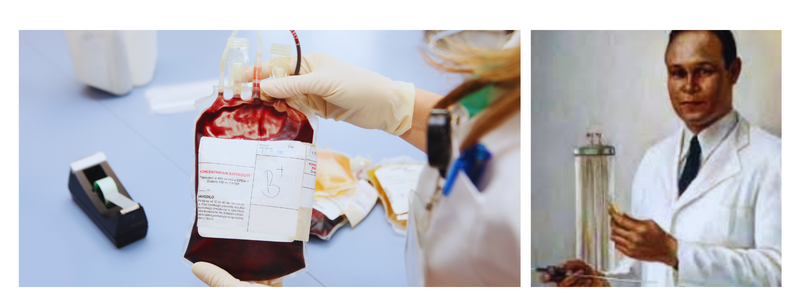
64. Jane C. Wright (1919 – 2013) – Cancer treatment
Jane C. Wright’s contributions to cancer research were groundbreaking. She transformed chemotherapy from an experimental method to a proven cancer treatment. Her work developing methotrexate for treating skin and breast cancer further cemented her reputation as a leading figure in cancer treatment. Wright was the first African American woman to become a medical college dean, serving as the head of the New York Medical College’s Department of Cancer Research. She was also the first woman elected the New York Cancer Society president. Her contributions to cancer treatment have saved countless lives and continue to inspire future generations of scientists and medical professionals.
65. Janet Emerson Bashen – LinkLine software
Janet Emerson Bashen pioneered Equal Employment Opportunity (EEO) management. While at an insurance company, she proposed an external team to investigate EEO, but the idea was rejected. Undeterred, she founded her own EEO management company, which became a huge success. To make the task of retrieving and storing EEO information easier, Bashen and her cousin Donny Moore developed the LinkLine software. This led to her being awarded a U.S. patent for software, making her the first African American woman to receive this honor. Bashen’s innovative spirit and commitment to EEO continue to inspire many today.
RELATED: Top 100 Famous Inventions and Greatest Ideas of All Time
66. Leonard C. Bailey (1825 – 1918) – Truss-and-bandage
Leonard C. Bailey’s career began in banking, where he helped establish the Capitol Savings Bank in 1888 and served as its president for a few years. However, he was also a prolific inventor with several patents. Bailey invented a truss-and-bandage for people with lower-body hernias in 1883, which the U.S. Army adopted. He also created a folding bed in 1899, designed for easy storage. Additionally, his speed stamper invention was used by the U.S. Postal Service. Despite not having a background in healthcare, Bailey’s inventions helped improve many people’s lives, and his legacy as an inventor continues to inspire today.
67. Alice Augusta Ball (1892 – 1916) – Leprosy treatment injection
Alice Augusta Ball was the first African American woman to graduate from the University of Hawaii with a Degree in Chemistry in 1915. She subsequently secured a teaching position at the university. Ball researched the effects of chaulmoogra oil on patients suffering from leprosy, which led to the creation of the first leprosy treatment injection. She discovered a method to isolate the fatty acid components and created a water-soluble compound from the oil. The injection was widely used for over 30 years to alleviate leprosy symptoms until the introduction of sulfone drugs. Ball’s groundbreaking work helped advance medical research and relieved countless individuals suffering from leprosy.
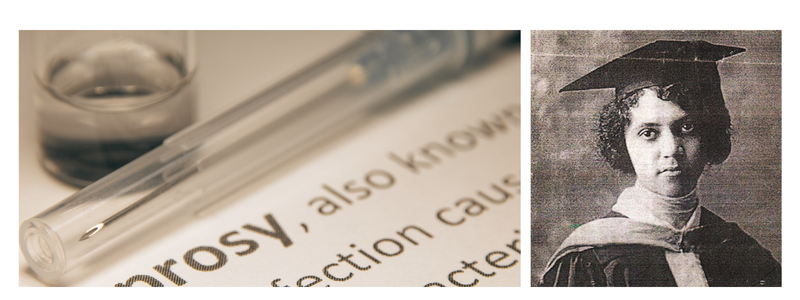
68. Mary Beatrice Davidson Kenner (1912 – 2006) – Sanitary belt
Mary Beatrice Davidson Kenner invented the sanitary belt, patented it in 1957, and revolutionized menstrual hygiene. Before her invention, most women were still using cloth pads for menstruation. The sanitary belt had a moisture-proof pocket and was adjustable to fit any user comfortably. Kenner also invented a toilet tissue holder, a back washer mounted on the shower wall, and a serving tray attached to a walking frame. Despite her many useful ideas now still widely used, Kenner was perhaps one of the most forgotten African American inventors.
69. Marian Croak (1955 – present) – VoIP technology
Marian Croak is a renowned computer scientist and inventor who has significantly contributed to modern communication technology. In 2013, she was inducted into the Women in Technology International Hall of Fame for her achievements. With over 200 patents to her name, Croak is best known for her work in developing Voice Over Internet Protocol (VoIP) technology. She has held several high-profile positions throughout her career, including Senior Vice President of Research and Development at AT&T, and currently serves as the Vice President of Engineering at Google. Croak’s innovations have helped shape modern communication technology and continue to impact the industry profoundly.
70. Henry T. Sampson (1934 -2015) – Gamma-electric cell
Henry T. Sampson became the first African American to earn a Ph.D. in nuclear engineering in the United States. In 1963, he was awarded a patent for a gamma-electric cell, which converts radiation into electricity. The device is used for capturing the radiation in the shielding of a nuclear reactor and transforming it into auxiliary power. This technology is used to generate additional power in nuclear reactors. Sampson’s invention has been significant for the nuclear power industry and has contributed to developing innovative power sources.
RELATED: 18 Random Invention Ideas That Made Millions
71. David N. Crosthwait (1898 – 1976) – Heating systems
David N. Crosthwait was an accomplished inventor with air conditioning and heat transfer expertise. Throughout his career, Crosthwait secured an impressive 119 patents, with 39 of them in the United States. He gained a reputation by the 1930s because of his numerous inventions, including a boiler, vacuum pump, and thermostat control. His most highly-respected accomplishments include his heating system design for New York’s iconic Radio City Music Hall and the Rockefeller Center. Crosthwait’s contributions to heating, ventilation, and air conditioning (HVAC) continue to inspire and inform new generations of inventors and engineers.
72. Charles Brooks (1800s) – Street sweeper
The invention of the street sweeper by Charles Brooks in 1896 revolutionized road cleaning. Before his invention, workers had to rely on rudimentary brooms or manually collect trash, making it a difficult and laborious task. The street sweeper was essentially a standard road truck equipped with brushes to push dirt and debris off to the side of the road. Initially, people were skeptical of the idea, as it did not meet their expectations. However, as cities grew larger and technology improved, street sweepers became indispensable road maintenance tools. Brooks’ innovation remains an integral part of road-cleaning technology today.
73. Jack Johnson (1878 – 1946) – Wrench
Jack Johnson was a professional boxer born in Galveston, Texas, in 1878. In 1908, he became the first African American World Heavyweight Champion after defeating Tommy Burns in Australia. However, Johnson lived in the United States when black men were not allowed by law to openly date white women. He was later charged with violating the Mann Act for transporting his white girlfriend, Lucille Cameron, across state lines for “immoral purposes” and sentenced to one year in prison.
During his time in prison, Johnson invented a wrench that could loosen and tighten fasteners, and he was granted a patent for it in 1922. Although not his primary claim to fame, Johnson’s invention of the wrench was significant and contributed to the development of modern tools.
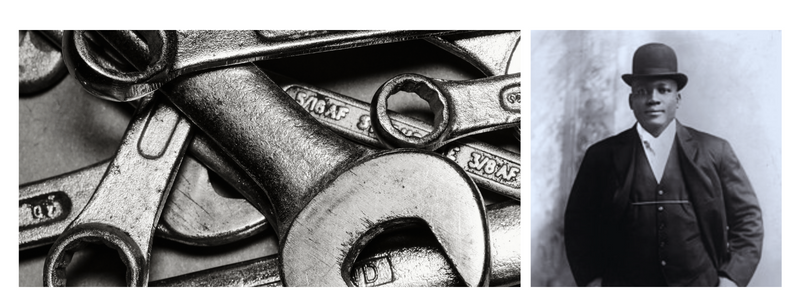
74. Joseph Lee (1848 – 1908) – Bread crumb machine
Joseph Lee, born into slavery in Charleston, South Carolina, in 1848, was an entrepreneur, chef, and inventor. He served as a blacksmith during the Civil War and later worked as a steward in the U.S. Coastal Survey for eleven years. Lee then established restaurants and a successful upscale catering company. Lee was bothered by the idea of throwing away day-old bread, so he invented the machine to automate tearing and grinding the bread into crumbs. This invention was awarded a patent in 1895, and Lee sold the rights to the Royal Worcester Bread Crumb Company. Lee’s invention revolutionized the food industry by providing a way to repurpose what was once considered waste. His innovation still influences the food industry today.
75. Lloyd Ray (1860 – 1940) – Dustpan
Lloyd Ray’s patent for the dustpan, granted on August 3, 1897, revolutionized cleaning. Before Ray’s invention, dust and debris on the floor had to be swept up by hand using a broom or a brush. The introduction of the dustpan made the process of cleaning more efficient and less labor-intensive. Ray’s design was simple but effective, with a metal collection plate attached to a wooden handle. It remains largely unchanged to this day, a testament to the timelessness and functionality of the original invention. The dustpan has become an essential household tool in homes, offices, and commercial establishments worldwide. Ray’s invention simplified cleaning and paved the way for future innovations in cleaning technology.
RELATED: Invention Ideas: Introducing the New Community for Inventors!
76. Joseph Dickinson (1855 – 1936) – Roller mechanism for sheet music
Joseph Dickinson began his career at the Clough & Warren Organ Company in Detroit when he was just 17 years old. The company was known as one of the largest organ makers in the world at that time. Dickinson designed an organ that impressed critics at the Centennial Exposition in Philadelphia in 1876. Despite his success in building organs for prestigious customers, such as the Royal Family of Portugal, Dickinson is most remembered for inventing the roller mechanism for sheet music.
The roller mechanism enabled pianos to play sheet music in forward and reverse modes, revolutionizing how people played music. This invention made it easier for people to learn new songs and easily switch between different pieces of music while playing. Dickinson’s roller mechanism became popular and is still used in player pianos.
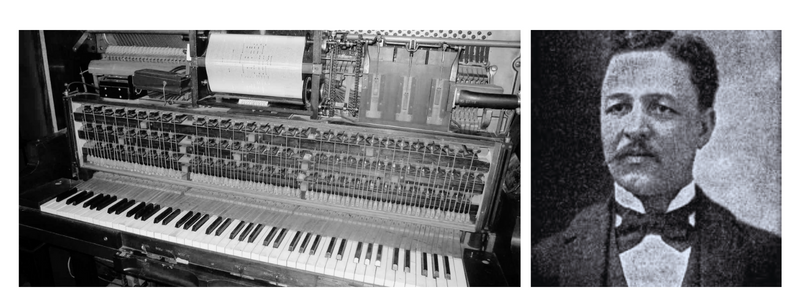
77. Matthew Cherry (1800s) – Street car fender
In the late 1800s, collisions between streetcars and other objects on the road were commonplace. Matthew Cherry, who had witnessed numerous incidents, decided to develop a protective device that could be fitted onto streetcars. He invented the “fender,” a metal plate attached to the front of the car, designed to absorb shock in the event of a collision. Cherry was granted a patent for the fender in 1895, and it soon became a standard safety feature on streetcars.
78. Miriam E. Benjamin (1861 – 1947) – Gong and signal chair
Miriam E. Benjamin was awarded a patent in 1888 for her invention, the “Gong and Signal Chair for Hotels.” The chair featured a button that signaled a light when pressed, allowing the servers to quickly identify which guest required assistance. This invention eliminated the need for guests to use hand-clapping or verbal cues to call for help, making it easier for guests and servers. The United States House of Representatives later adopted the design.
79. Richard Bowie Spikes (1878 – 1965) – Automatic safety brake
Richard Bowie Spikes, who was almost blind then, invented and patented an automatic safety braking system for buses and trucks in 1962. This innovative system was designed to help prevent accidents by automatically stopping the vehicle if it sensed an obstacle ahead. The invention was quickly adopted by school buses across the United States, making them much safer for children. Spikes also held several other patents during his lifetime, including ones for an improved beer tap, an automatic gear shift device, and directional signals for vehicles.
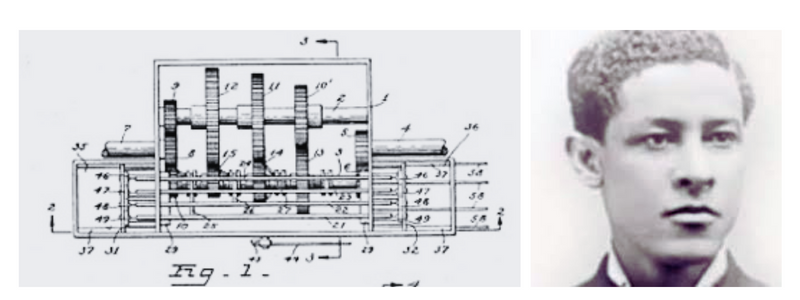
80. Robert Pelham (1859 – 1943) – Improved tallying machine and pasting apparatus
While working at the United States Census Bureau, Robert Pelham invented the pasting apparatus in 1905 and the new tallying machine in 1913. The pasting device was used to attach paper strips containing census data onto large sheets, making the task quicker and more efficient. The new tallying machine Pelham invented in 1913 automated counting census data, resulting in significant time and resource savings. Both inventions revolutionized the census-taking process and helped ensure more accurate and comprehensive data collection.
RELATED: Product Design Guide for Freelancers Developing an Invention
81. Thomas Mensah (1950 – present) – Improved fiber optics manufacturing
A series of innovations in the manufacturing process of fiber optics led Thomas Mensah to develop a new technique that could deliver 20 meters per second output in 1985. Previously the fibers were produced at a rate of only 2 – 3 meters per second. Such a massive jump in production efficiency allowed the manufacturers to sell optical fibers at prices comparable to copper cables. Based on his work, further improvements in manufacturing methods eventually reached a peak speed of 50 meters per second.
In 1986, Mensah moved from Corning Glass Works to Bell Laboratories and led a weapon development team for the U.S. Department of Defense. His team built the first laser-guided missile system. Mensah’s innovative spirit and technological contributions have had a significant impact, making fiber optic communication a reality and advancing weapon technology.
82. Thomas Stewart (1823 – 1890) – Mop
Thomas Stewart, an African American inventor from Kalamazoo, Michigan, invented the precursor of the modern mop in 1893. Before the invention, cleaning floors was a strenuous process that involved manually scrubbing the surface with rags or brushes. Stewart’s invention included a clamping device that held the rag attached to a lever, allowing the user to wring the water out of the mop after several strokes. Although manual labor was still required, the invention made the job easier and more dignified. Stewart also co-invented an improved version of the station indicator for railways. The indicator was designed to activate automatically as the train hit a small lever on the side of the track, allowing the station to determine the train’s position and track.

83. Thomas Elkins (1818 – 1900) – Refrigeration
Thomas Elkin revolutionized the food preservation industry with his groundbreaking invention in the late 1800s. Before his discovery, perishable goods were only preserved using large ice blocks, often insufficient during a hot summer. However, Elkin’s invention of the metal cooling coils was a game-changer, and it effectively preserved food without ice blocks, making it a more efficient and cost-effective solution. Thanks to his innovation, the modern refrigeration industry was born, forever transforming how we store and preserve food. Elkin’s significant contribution was recognized when he was awarded a U.S. patent for his revolutionary invention in 1879.
84. Willis Johnson (1947 – present) – Rotary egg beater
When Willis Johnson invented his mixing apparatus in 1884, he had no idea how it would revolutionize the world of cooking. By transforming the slow rotation of a crank into a high-speed whisking motion, the machine could easily beat eggs and other ingredients, saving valuable time and effort in the kitchen. Despite being small and easy to use, Johnson’s invention was powerful enough to impact food preparation significantly. His innovation was so influential that modern rotary egg beaters and electric mixers still use the same basic principle today. Johnson’s invention was a game-changer for home cooks and professional chefs, earning him a patent and a place in culinary history.
85. John Lee Love (1889 -1931) – Portable pencil sharpener
John Lee Love, who passed away in December 1931, is best known for inventing two simple yet practical products: the plasterer’s hawk and the portable pencil sharpener. Although not technologically advanced, his ideas aimed to make everyday tasks easier. Before the pencil sharpener, people commonly used a knife to sharpen their pencils, but Love’s invention offered a more straightforward, affordable, and practical solution.
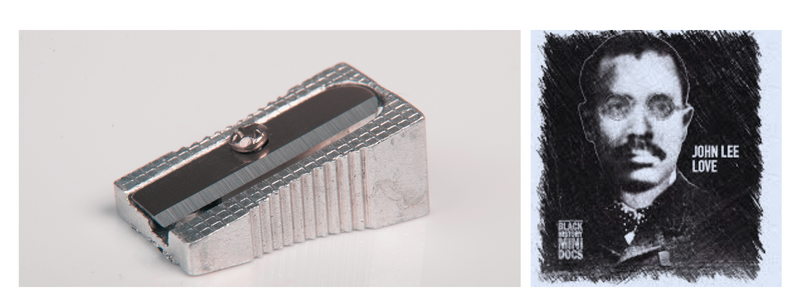
RELATED: 21 Companies Looking for Your Invention Ideas to License New Products
86. Henry Falkener (1924 – 1981) – Ventilated shoes
In 1890, Henry Falkener was granted a U.S. patent for his invention of the ventilated shoe, a breakthrough in footwear technology at that time. Unlike modern shoes, sneakers, and athletic runners made with breathable materials, Falkener’s design, aided by his expertise in prototypes for shoes, sneakers, and athletic runners, featured an innovative air passage between the material and lining, ensuring proper airflow in and out of the shoe. To achieve this, he fitted perforated inner soles to allow fresh air to enter the shoe without obstruction. Falkener’s design included a rubber bubble under the heel connected to an upward-facing open tube, creating an air passage. Whenever the wearer took a step and pressed the bubble, foul air would be forced out, allowing fresh air to enter the shoe.
87. Albert C. Richardson (1868 – 1932) – Casket lowering device
Albert C. Richardson from Frankfort, Michigan, invented a casket-lowering device that was granted U.S. patent No. 529311. The device was a simple, cost-effective solution that could be easily attached to a trench or ditch to receive the deceased’s casket. The device was mechanically operated, offering safe and stable support to prevent the casket from falling or dirt from spilling off the trench’s edge. It was constructed using a series of pulleys, cloths, and ropes, providing a secure and balanced descent for the casket.
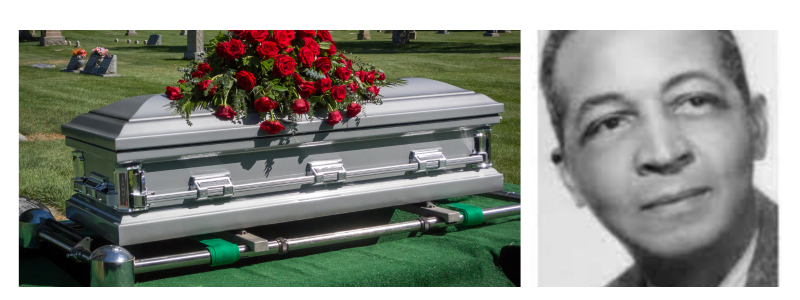
88. Daniel McCree (1800s) – Wooden portable fire escape
In the 1800s, fire escapes were primarily available for commercial and multi-story buildings, leaving homeowners with few options. Daniel McCree solved the problem by designing a lightweight fire escape made of wood that could be easily attached to windowsills, allowing occupants on the second or third floor to escape in case of fire. His invention was awarded a patent in 1890, and modern residential fire escapes are still based on his design.
89. Benjamin Thornton (1800s) – Voice message recorder
In 1931, Benjamin Thornton was awarded a patent for his “Apparatus for Automatically Recording Telephonic Messages,” an early version of today’s answering machine. While some sources credit Thornton with inventing the answering machine in 1935, his device was an attachment for telephones that could record messages from callers and timestamp them. It also allowed the telephone owner to record messages on the device.
90. David A. Fisher, Jr. (1800s) – Improved joiner clamps and furniture caster
David A. Fisher, an inventor, designed two tools that revolutionized carpentry and cabinetry work: an improved joiner clamp and a furniture caster. The clamp eliminated the need for workers to pause multiple times to hold two pieces of wood together while applying glue or other fasteners. Instead, the clamp could mechanically and securely hold pieces of wood together, saving time and increasing efficiency. Fisher patented the invention in April 1875. A year later, in March 1876, Fisher received a patent for a furniture caster, which featured free-turning wheels (rollers) that allowed cabinetmakers to move large pieces of furniture effortlessly.
RELATED: 5 Cool Invention Ideas from the Cad Crowd Community
91. Edward R. Lewis (1800s) – Spring gun
There is debate about who invented the spring gun to scare away trespassers. While some sources attribute its invention to Edward R. Lewis, the patent he was granted in 1887 pertained to a toy. The toy consisted of a metal tube on a wooden support with a wire trigger mechanism that required only a simple motion to activate the trigger release. The wire was attached to a holder, and the trigger would release when the holder was disturbed, causing the toy to shoot a projectile. While Lewis did not mention using the toy as a booby trap, some people may have repurposed it for that use.

92. Joseph Hawkins (1800s) – Improved gridiron
Joseph Hawkins received a patent in 1845 for his invention, the gridiron. The gridiron was a cooking apparatus with a metal rack attached to a wooden handle. It was designed for heating or cooking meals, particularly meat, and could be placed inside a fireplace or on a campfire. However, during the early 19th century, the gridiron was not widely used as most people had already switched to using more convenient kitchen stoves.
93. Alexander P. Ashbourne (1820 -1915) – A method for refining coconut oil
Alexander Ashbourne was born into slavery around 1820 in Philadelphia, and little is known about his early life. However, he later gained recognition for his inventions and was awarded several patents, including one in 1875 for a spring-loaded biscuit cutter. About five years later, Ashbourne also received a patent for his techniques for refining and treating coconut oil. Despite his success as an inventor, Ashbourne’s life story remains largely unknown today.
94. William Binga (1800s) – Apparatus for street sprinkling system
n 1879, William Binga was awarded a patent for an apparatus constructed from perforated pipes connected to water mains and attached to sidewalks, streets, and roads. The invention allowed the existing sprinkler system to reach all surface areas of a street, including gutters, with excellent efficiency.
95. James A. Sweeting (1800s) – Mechanical cigarette roller
James A. Sweeting’s invention, described in the U.S. patent file 549501, issued in 1897, was a device for easily rolling cigarettes. The device comprised a cylindrical rod holding the tobacco and a mechanism to hold the cigarette paper. When used correctly, the device would create a perfectly formed cigarette. The paper might require dampening along the roller line to prevent the cigarette from unraveling. Sweeting’s goal was to make it easy for regular cigarette smokers to roll their cigarettes rather than only being accessible to cigarette manufacturers.
RELATED: Business Tips for Inventors: How to Turn Your Invention Into a Successful Product
96. Robert R. Reynolds (1800s) – Design for non-refillable bottle caps
Robert Reynolds, with his expertise in custom product packaging design, was granted a patent in 1899 for inventing the non-refillable bottle. It was designed with valve stoppers permanently attached to the bottle to prevent unauthorized or misinterpreted use. The invention benefited products that needed to maintain their original quality, such as medication and food. This innovation prevented consumers from accidentally or intentionally refilling the bottles with other substances that could cause contamination or harm. As a result, the non-refillable bottle became a standard packaging choice for products requiring high safety and hygiene.
97. William B. Purvis (1838 – 1914) – Improved fountain pen
William Purvis patented an improvement to the early design of fountain pens in 1890. Before his invention, fountain pens did not have an onboard ink reservoir and required a separate ink bottle. Purvis’ design included a small ink storage inside the pen, allowing for even ink distribution onto the writing medium. Purvis’s invention of the fountain pen with onboard ink storage made handwriting work cleaner and more efficient than the previous method.
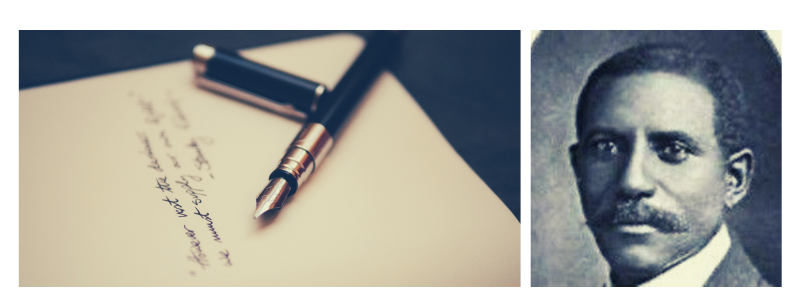
98. Kerrie Holley (1954 – present) – Mobile device finder system
Kerrie Holley is a renowned inventor and technology consultant who has significantly contributed to analytics and systems engineering. During his time at IBM, Holley has been awarded several patents for his groundbreaking inventions, including a system to locate lost mobile devices and a process for maintaining functionality in the face of component failure. However, his most notable invention is the IBM Service-oriented architecture (SOA) reference architecture, revolutionizing how businesses approached software development and integration. Holley was named Black Engineer of the Year in 2003 for his numerous contributions to the technology industry and continues to be a prominent figure in the field.
99. John White (1857 – 1937) – Lemon squeezer
John White’s invention of the lemon squeezer was a testament to his expertise in tool design and development. This simple yet practical, and the tool is now a household staple used by many worldwide. Unlike Kerrie Holley, who was awarded patents for complex technologies, White’s invention was much more straightforward. The lemon squeezer described in his patent application closely resembles the familiar modern design, and it also included a container attachment to collect the juice.
100. Washington Martin (1800s) – Lock
Martin’s lock design was revolutionary for its time and eventually led to the creation of many other improved locks. Martin himself went on to patent several other inventions, including an electric motor and an electrical switch. His lock design was significant not only for its security improvements but also for its impact on the field of locksmithing. Locksmiths no longer had to rely solely on the ancient bolt design but now had access to new and improved lock designs, eventually leading to more advanced security systems. Today, Martin’s lock design is still used as the foundation for many modern lock systems.
RELATED: Guide for New Product Design and Invention Ideas
101. Henrietta M. Bradberry (1903 -1979) – Torpedo discharge means
Henrietta Bradberry’s two inventions, the bed rack and torpedo discharge mechanism, showcase her range as an inventor. The bed rack, patented in 1943, was a simple yet practical design that allowed people to expose their worn bedclothes to fresh air. In contrast, her second invention, the torpedo discharge mechanism, was a highly technical device requiring extensive submarine operations knowledge.
Her improvements to the mechanism ensured that water could not enter the submarine chamber upon missile release, making it more efficient and effective. Bradberry’s diverse portfolio of inventions highlights her ingenuity and adaptability as an inventor, as she could design both practical and highly technical inventions.
Summary
The Top 101 Black Inventors and African Americans’ Best Invention Ideas that Changed the World highlight some of the most significant contributions of Black inventors to society. The list includes inventors from various fields, including science, medicine, transportation, etc. Among the inventions are traffic signals, the super soaker water gun, the ironing board, the refrigerator, and the carbon filament for the lightbulb. These inventions have had a significant impact on our daily lives and have helped shape modern society. The list serves as a testament to the ingenuity and creativity of Black inventors and their vital contributions to technology and innovation.
How Cad Crowd can help
Cad Crowd is an esteemed online platform that provides a seamless connection between inventors and highly skilled freelance CAD designers and engineers from across the globe. Our platform offers a comprehensive range of professional services, including but not limited to new invention design services, 3D modeling, new product design services, engineering analysis, prototyping, and manufacturing support. Through our platform, inventors can post their projects and receive competitive bids from proficient professionals with the necessary skillset and expertise. Our secure payment system, project management tools, and extensive talent pool ensure that the design and manufacturing process is conducted professionally and efficiently.
Cad Crowd is the ultimate solution if you’re an inventor seeking professional invention design help & freelance product development services to bring your ideas to life. Contact us today to learn more about how we can help you bring your vision to life. Request a free quote to get started on your project.

So interesting, and so frustrating that the Black Inventors were not mentioned when I was in school or college. Yes, It’s both fascinating and disheartening to realize that the contributions of Black inventors were largely omitted from the curriculum during my time in school and college. This oversight in education highlights a significant gap in our understanding of scientific and technological history, and underscores the importance of inclusive historical narratives.
The exclusion of these important figures not only deprives students of a complete picture of innovation and progress, but also fails to provide diverse role models in STEM fields. Recognizing the achievements of Black inventors is crucial for inspiring future generations and acknowledging the full spectrum of human ingenuity throughout history.
Fortunately, there’s a growing awareness of this issue, and efforts are being made to incorporate more diverse perspectives into educational materials. It’s encouraging to see that modern curricula are increasingly highlighting the accomplishments of inventors and innovators from various backgrounds, including Black inventors who have made significant contributions to science, technology, and everyday life.
This list was beneficial for me to be presented at the first-ever Copper Color summit I’ll give in Philadelphia PA this year.
Cash prizes will be given to people who can remember the names of these copper color inventors and their classic inventions from this list.
I appreciate this information. I will be talking on this subject at a Black History Church program on February 24, 2024. Thank you.
I like all of them on this website i’m in middle school and doing a group project on black inventors I had to pick 20 of them
Do you go to Watkins?